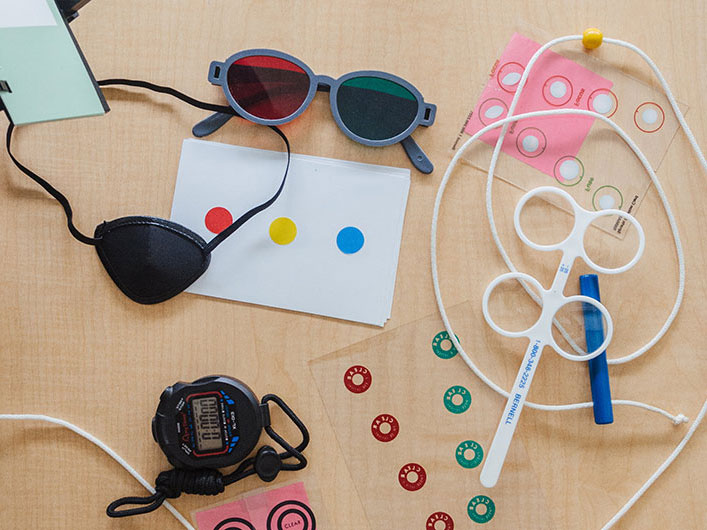Revitalizing Your Vision: Vision Therapy and Its Impact
Understanding Vision Therapy
– Vision therapy is a branch of eye care that aims to rehabilitate an individual’s vision.
– It differs from Visual Acuity, which quantifies the sense of vision.
– Vision therapy includes a spectrum of visual skills such as contrast sensitivity, depth perception, color vision, focusing ability, peripheral awareness, etc.
– Vision therapy is designed to improve visual comfort, ease, binocular vision, treat double vision, and address changes in visual processing and visual information.
Benefits of Vision Therapy
– Vision therapy involves a series of exercises aimed at improving specific visual skills.
– It does not promise to reverse visual impairments, but it can address a variety of visual problems.
Common Conditions Treated in Clinics
– Amblyopia or Lazy Eye: A condition where the affected eye has poor visual acuity despite full spectacle/contact lens correction and the absence of any ocular pathology.
– Convergence Insufficiency: Eye movement that occurs when an individual focuses on nearby objects.
– Eye-Hand Coordination: Crucial in sports and falls under the category of sports vision therapy.
– Neurological Disorders: An emerging subspecialty within optometric vision therapy that aims to rehabilitate patients with visual deficits stemming from physical disabilities, traumatic brain injuries, or neurological insults.
Role of Vision Therapists
– Vision therapists diagnose, treat, and provide personalized therapy for the patients.
– They assess visual problems, design customized treatment plans, perform vision therapy exercises, educate patients, and enhance quality of life.
Vision Therapy Techniques and Approaches
– Techniques and approaches vary depending on an individual’s condition and goals for therapy.
– Each patient’s goals are collectively established by the patient and the therapist before therapy begins to ensure accurate expectations..
– Eye Exercises and Activities: Vision therapy involves focusing on different objects at near and far distances. Specific lenses may be introduced to increase difficulty.
– Prisms: Specialized lenses with prisms are used to address binocular vision issues. These lenses shift the image of an object to fall on the intended part of the retina, promoting binocular vision.
– Visual Therapy Devices: The “Brock String” and the “Hart Chart” are used to work on convergence and divergence of the eyes.
– Patching/Occlusion: This treatment is the first choice for amblyopia or lazy eye. It involves patching the good eye, forcing the lazy eye to work, improving visual acuity.
– Computer-Based Therapy: Technological advancements, including the COVID-19 pandemic, have prompted the incorporation of telemedicine into vision therapy. Home-based therapy, like Revital Vision therapy, allows therapy to be conducted remotely.
– Behavioral Vision Therapy: Vision is linked to overall personality development and can significantly impact a child’s academic performance.
– Vision-Motor Integration: Vision therapy focuses on connecting visual processing with motor tasks, improving visual processing skills and eye-hand coordination.
Vision Therapy in Pediatric Care
– Early Detection and Intervention: Comprehensive eye exams can help identify and treat vision problems in children early.
– Academic Success: Vision therapy improves overall functioning, leading to improved academic performance.
– Improved Concentration and Attention: Vision therapy training procedures help children focus better during studies and enhance their visualization skills.
Vision Therapy Session at DIVYA EYE CLINIC
– EYEBAB: A computer-based vision therapy session that treats lazy eyes in both children and adults.
– Patient patches the sound eye and performs the therapy with the affected eye from 1.5 meters away.
– Therapy duration varies based on the severity of the condition.
Choosing the Right Vision Therapist
– Considerations for a vision therapist include credentials, training, experience, referrals, reviews, patient-centered care, communication updates, and comfort and trust.
Vision Therapy Overview
– Involves eye exercises, home-based activities, prism prescriptions, computer-based vision therapy like Revital Vision, visuo-motor integration skills, and visual information processing skills.
– Requires FDA approval for effectiveness and efficacy.
– Suitable for individuals aged 7-8 years and older.
– Benefits include intermittent exotropia, diplopia, binocular vision dysfunction, convergence paralysis/paresis, visual perception, and cognitive deficits.
– FDA-approved innovations like Revital Vision for adult vision therapy.
– Results typically take 6-8 weeks, with severe conditions requiring longer duration.

